RookiezFromWarsaw
joined
A bunch of game dev Rookiez acting like a Pro.

Today is THE day! Wave War One is now available on Steam and gives you the chance to step into the shoes of World War I military commander. Be brave, be smart, be the leader. And remember - one step forth to the next trench is the one step closer to the great victory!
Wave War One offers you the chance to lead the troops fighting in trenches of World War I. The game is a mix of real-time tactics and tower defense: choose which soldier classes you need, decide who and when to call for duty and make sure they attack when the field is open... and retreat or hide in the trenches when the enemy fire is too heavy.
Link to the game: store.steampowered.com/Wave_War_One
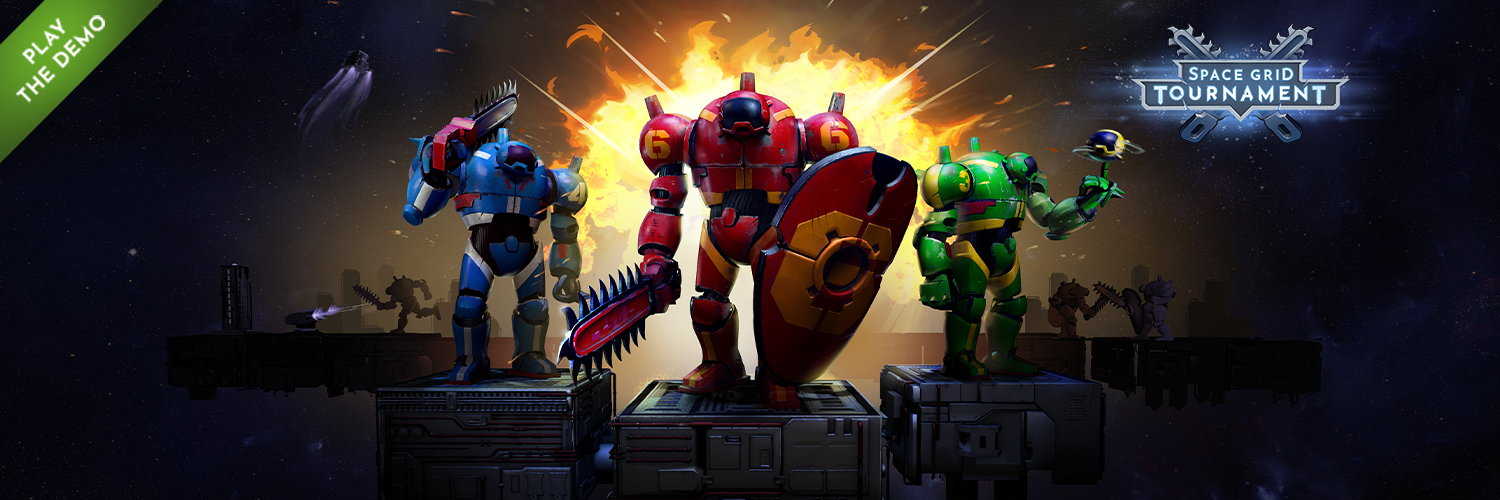
Steam Next Fest starts today, and we are also there with our fresh, brand new demo of Space Grid Tournament! The event officially begins 7:00 p.m. CEST, but our demo is available just now for all of you who wants to join, play and test the game :)
Here is a brief summary of what you can expect from the demo:
- Deathmatch mode (free-for-all)
- Single player and couch multiplayer modes
- Ranks system up to Silver rank
- Dynamic AI, adjusting to your current rank
- All playable team colors and emblems
- Unlimited matches to play
We can't wait to see you playing the demo and sharing your thoughts, opinions and suggestions with us. Have fun!
You can download the demo here: Space Grid Tournament DEMO
Simple mechanics, deep gameplay – a few words on how to make an accessible yet engaging game without complex and hard to learn systems.
If we think about deep gameplay, complexity is one of the words which naturally comes to our mind. For example, the best strategy games tend to have lots of tiny elements working together to form the actual experience. But is complexity really needed to make the game feel „deep" and rewarding? Are there any other ways maybe? We strongly believe so. Let us demonstrate this on the example of our upcoming game, Voxel Battle Simulator!
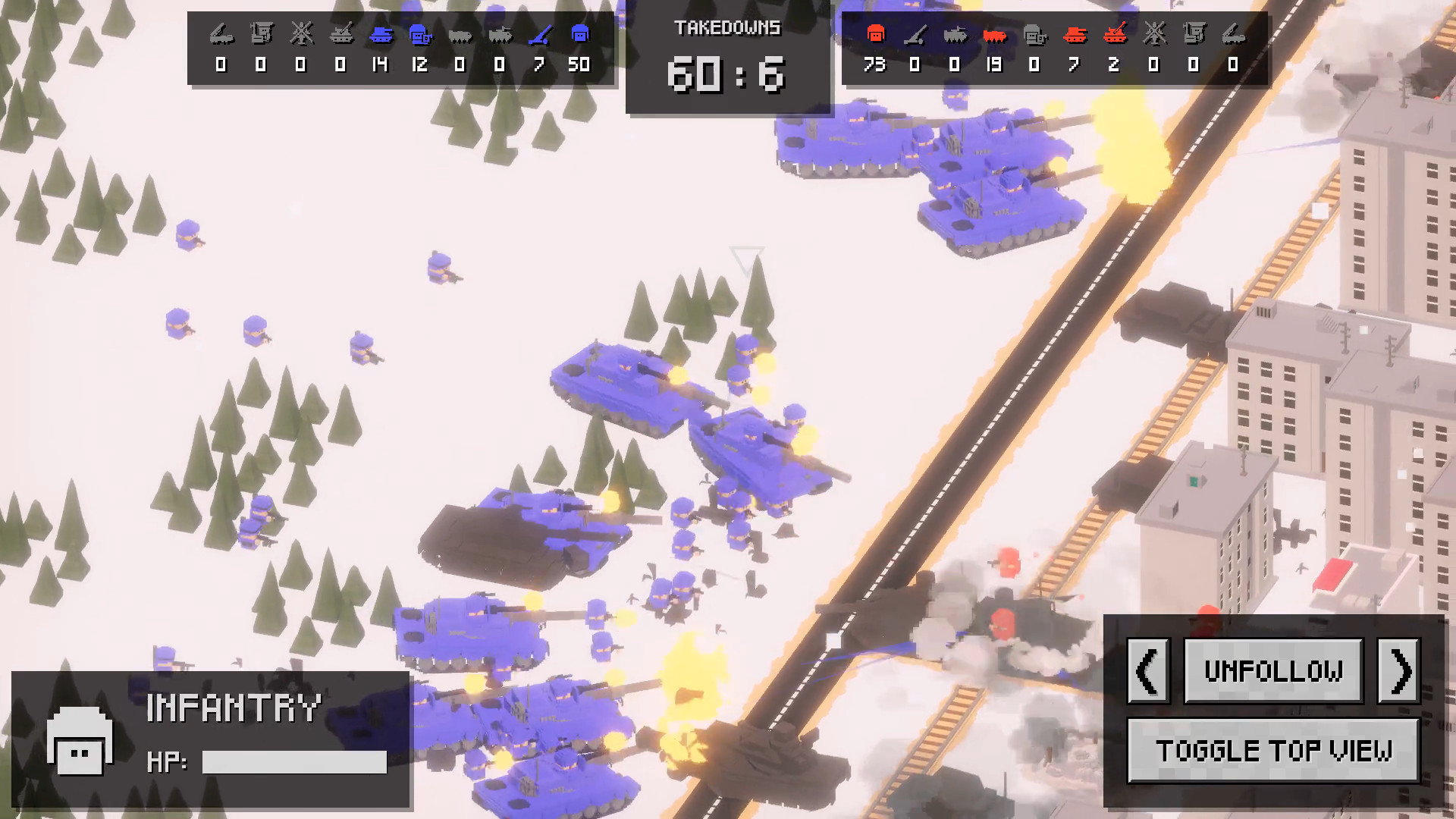
Voxel Battle Simulator is a tactical game, in which you analyze the battlefield (limited to a single screen), figure out the best strategy to defeat the enemy, buy and deploy units, and… see what happens. In most cases, you won't succeed on the first try, so you repeat the process, analyzing what you did wrong and learning from your own mistakes. There is no micromanagement, no base building, or careful use of resources. It’s simple, and this simplicity is precisely what makes Voxel Battle SImulator so fun to play over and over again.
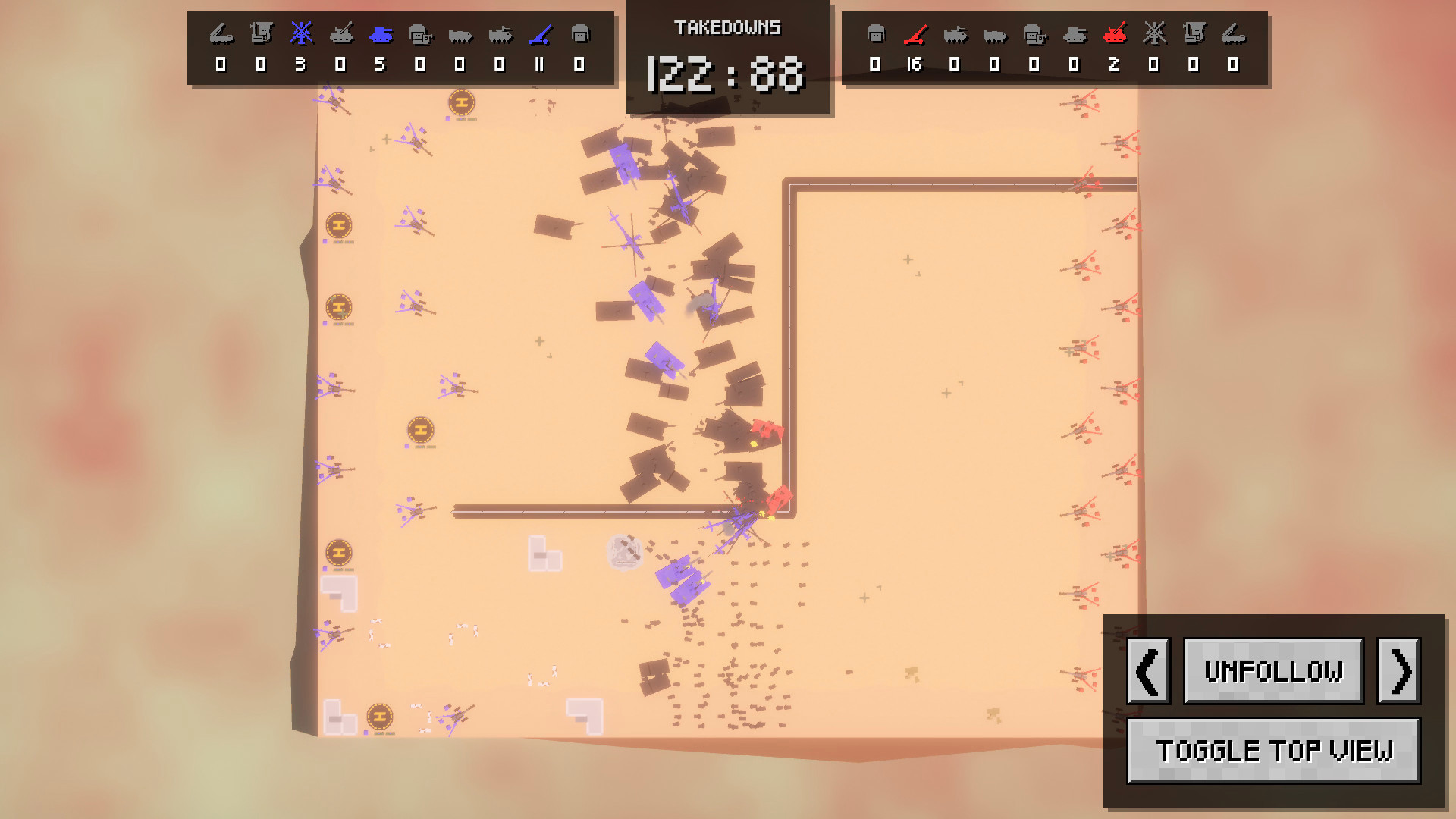
The key to the success in making simple yet rewarding games is to find a maximum of 2-3 key mechanics to form the gameplay. In case of Voxel Battle Simulator, it is the limited number of units available: instead of tens of different units, the player has only the basic types of forces on his command. On the other hand though, there are no restrictions on what types of units you can buy in every turn and how you can place them on the battlefield – the only restriction is the budget you have. Wanna try to take a charge on tanks with a large count of infantry? Why not! Or maybe you prefer to stop these tanks with transporters and fire the devastating artillery strike from the second line? Sure, you can try and find out if it works.
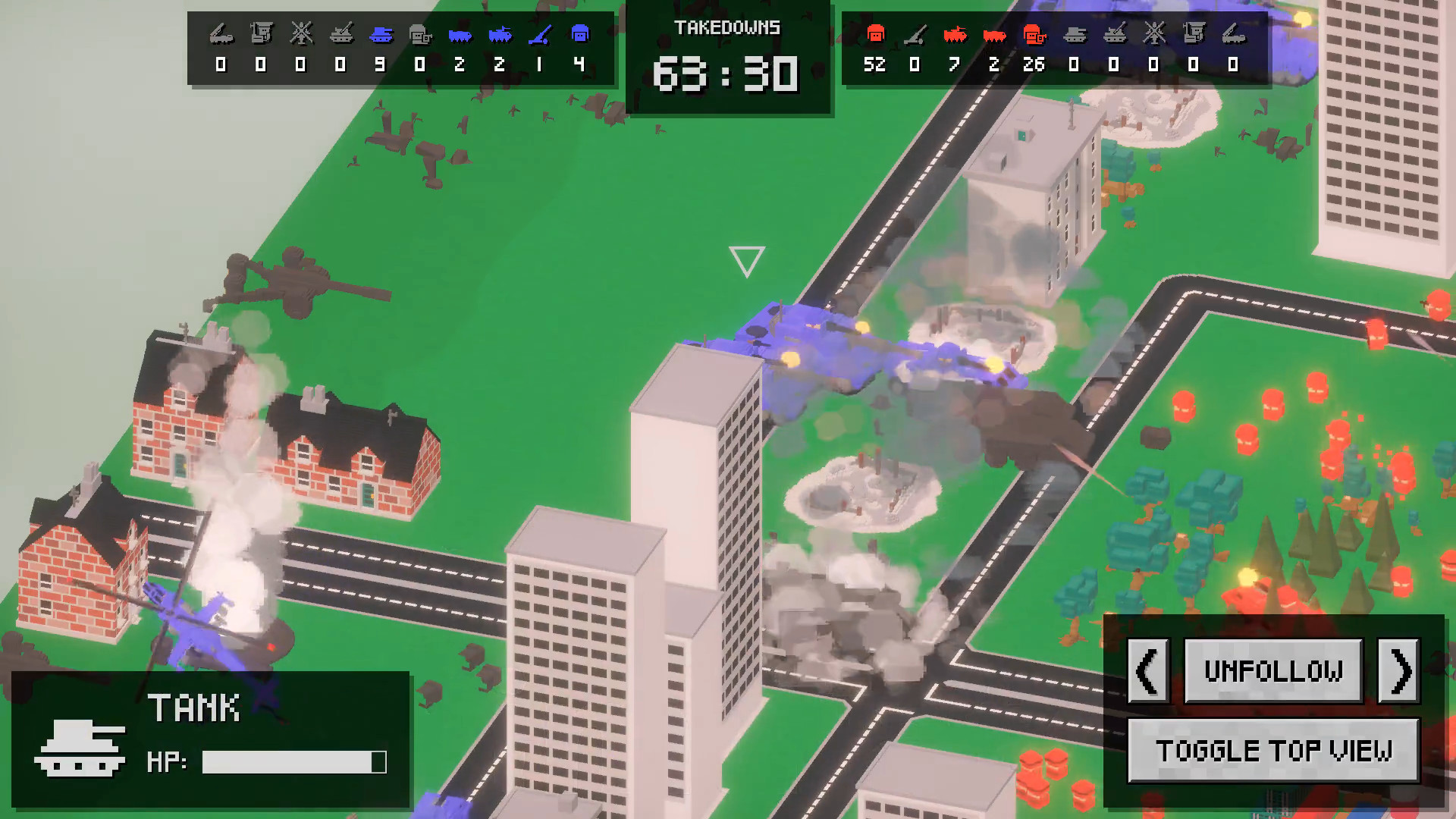
The approach presented above lets the player focus on the main aspect of the game: tactical battles, without being distracted by unnecessary gameplay elements. The effect is also supported by the fact that you have instant feedback – all the battles last a minute or two, so you immediately know if your plan was successful, and if not, you can draw conclusions and try once again right away. It is even more important in sandbox mode, where you can play versus AI or your friends, trying and testing different (or sometimes even crazy) armies combinations. There is something really captivating in deploying 50 infantry and transporter units against a line of tanks and watching what happens – all this in a matter of seconds!
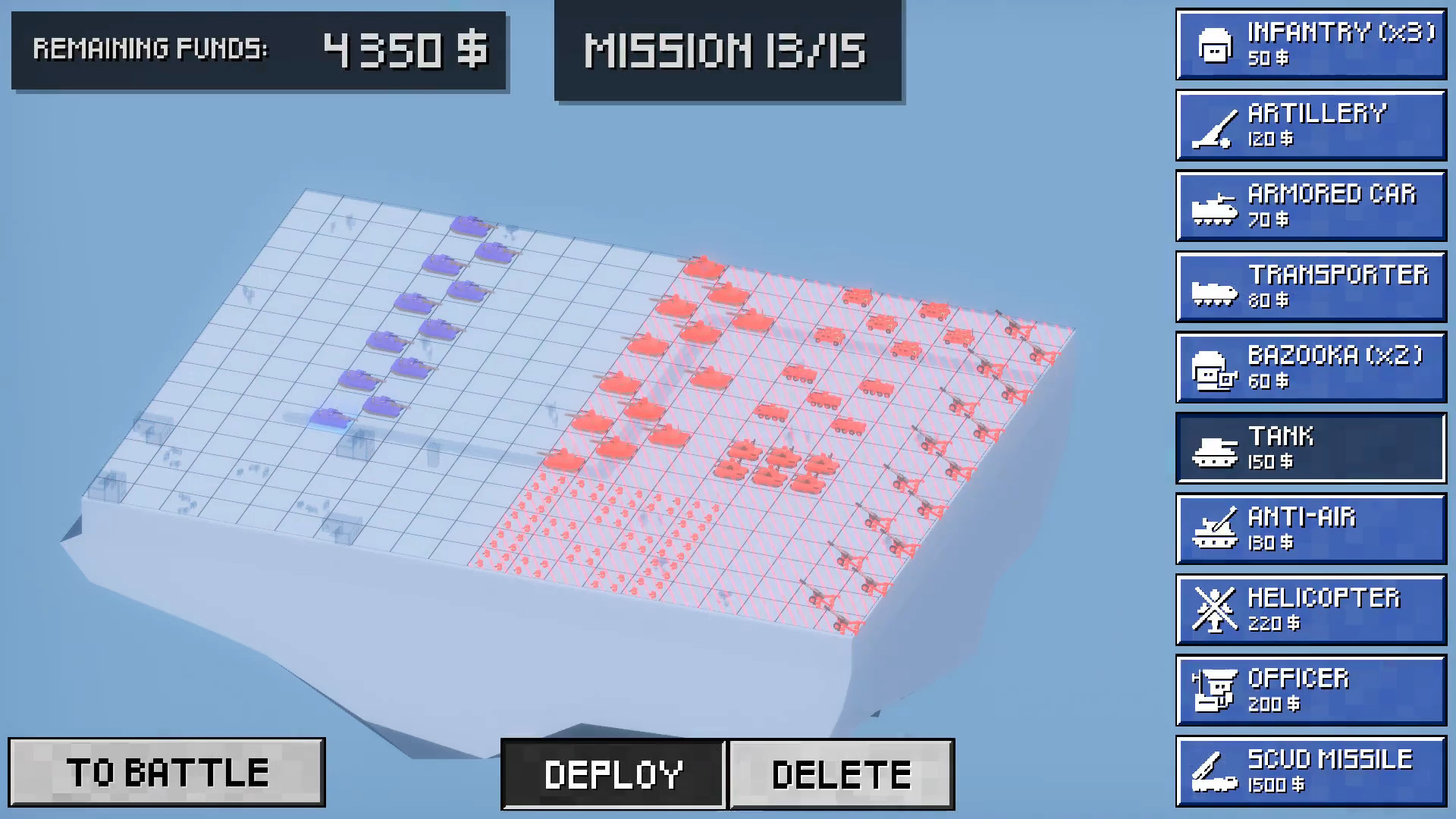
To make things even more clear and easy to understand, we decided to utilize voxel graphics, with armies colored red and blue. While still looking good, the game lets the player „read” the battlefield within the blink of an eye – and that’s precisely the effect we’re about. Although it was really tempting to make the visuals a bit more realistic or add special effects here or there, it won't serve our goal of making a simple yet rewarding tactical battle simulator.
Summing it all up, the deepness of the gameplay does not depend on the number of features or how complex they are. Choosing the core mechanics carefully and making them work together like a charm is more than enough to make deep, engaging, and virtually endless gameplay.
The old formula, the new approach – how to mix well-known gameplay mechanics to achieve new quality? The idea and concept behind CyberNEON.
It’s commonly said that there is no room for real innovation in gaming nowadays – that all the gameplay mechanics, stories, and even visual styles have already been developed years ago, and what's left for us now is to follow these well-established ideas and principles on their footsteps. But is it really? The reality seems to be a bit different – every month we can see some lost, hidden gems emerging from nowhere, bringing something new and fresh to the table. In many cases, this is just a collection of old ideas mixed in the way no one thought of mixing before – a clever evolution.
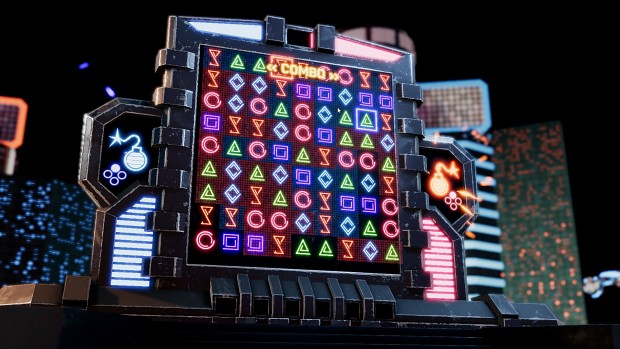
One day we asked ourselves: „How can we bring something new and fresh to the genre that is one of the best defined in the industry: match-three?”. Our answer to this question is CyberNEON, a game that takes the classic match-three concept for a spin. Instead of making users play through hundreds of similar levels, we decided to make… a party game! In three different modes, you try to align 3 or more symbols in line faster than your opponent, marking the area you „own” blue or red. Whoever marks a certain percent of the area with his/her color first – wins. This way we added competitiveness to the generally single-player genre, making the gameplay fast, engaging… and literally endless! CyberNEON is there if you want to have good fun with your friends, regardless of how much time you have and how skilled you are.
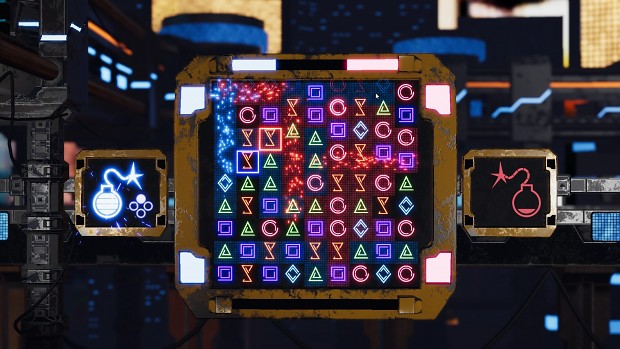
But is mixing many mechanics from different genres in one game always a good idea? Well, that’s a bit more complicated. In general, there are three factors you should think of. Let’s start with the simplest: these mechanics need to fit each other and form a natural whole. A good example is Tetris 99, which combines all-time classic mechanics with super popular nowadays battle royale formula – one adds depth to the other, they are not contradictory. The same is true with our CyberNEON, where the competitive aspect enriches the gameplay without breaking it.
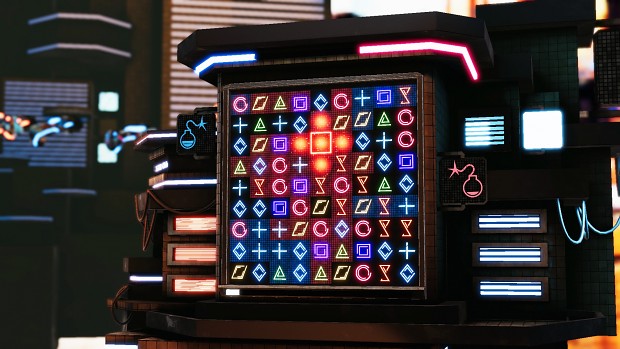
The second factor is: the new feature needs to really add to the gameplay. One negative example that can be given here is crafting. After the huge success of Minecraft, it was a big pressure to include crafting in many different games, among which most didn’t really need it. Finally, we ended up with a bunch of games where you actually don’t use crafting often (or even don’t use it at all!), as it is clear it’s just an unnecessary „bonus”, without real influence on the core gameplay. If you’re not sure how two mechanics you want to mix will form a new quality, it’s most probably not a good way to go.

Last but not least, in most cases, you shouldn't mix too many genres in a single game. As for CyberNEON, we decided two is more than enough: classic match-three with a competitive multiplayer mode makes the game fresh and gives a new experience to the players. What if we also add a philosophical story, dynamic shooting, team management, and, say, music-based QTEs? Most probably the game will be much harder to present to the player and the mechanics more difficult to grasp, not even mentioning how odd it will look and play. More doesn’t always mean better.
The most important question remains: is it all worth it? Won't it be easier to just make the game of the well-known and established genre and hope for the best? Our answer is: yes, it is worth it! It's not only great fun when you see how these different elements mix together, forming something new and fresh. It's also an awesome way to show yourself to the players, stand out in the huge crowd of games trying to catch the attention of users. Additionally, it makes you add your individual input in the industry, pushing it another step further – from which we all benefit!
If you're curious about CyberNEON, you can learn more about the game and wishlist here:
store.steampowered.com/app/1503130/CyberNEON